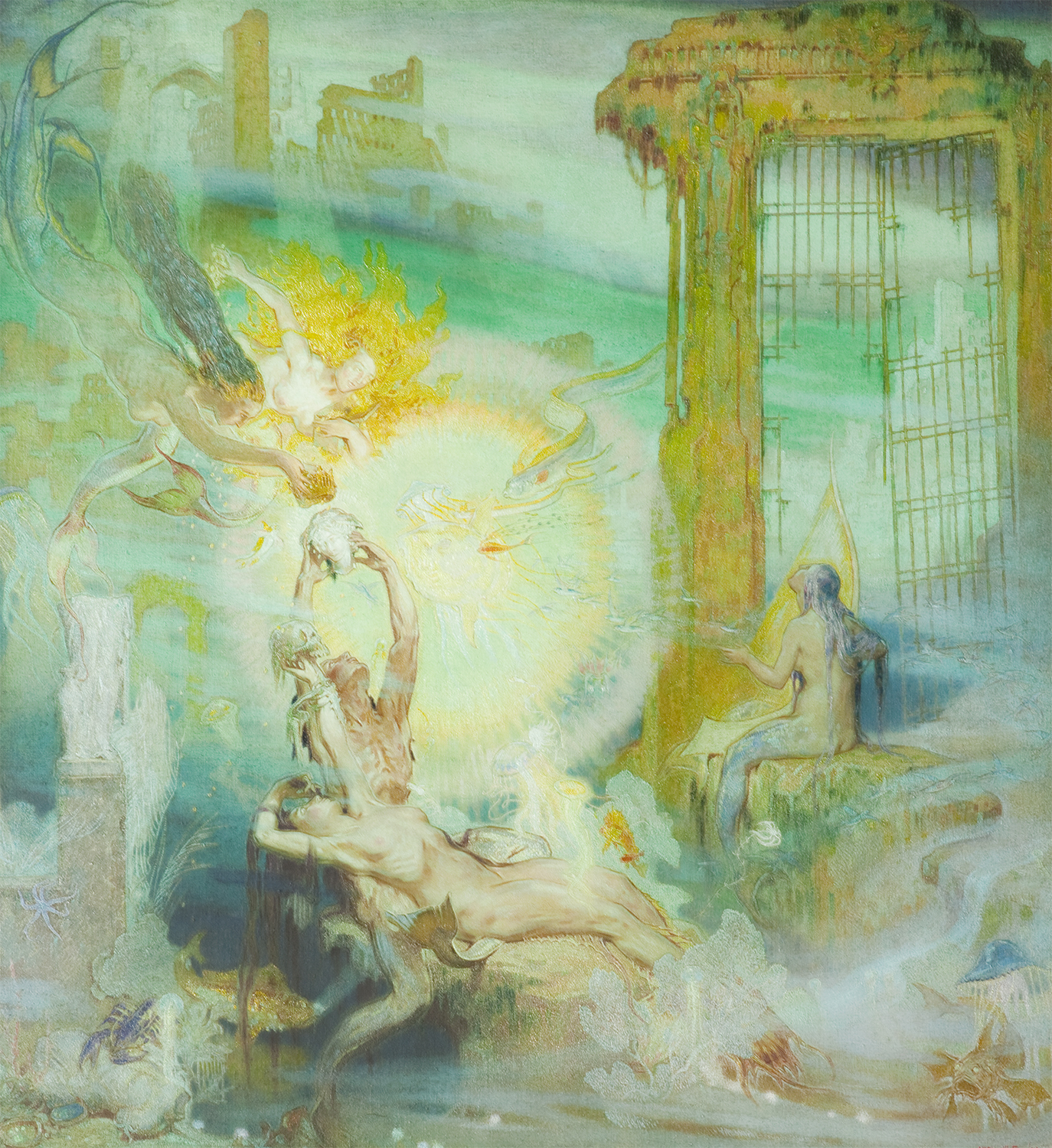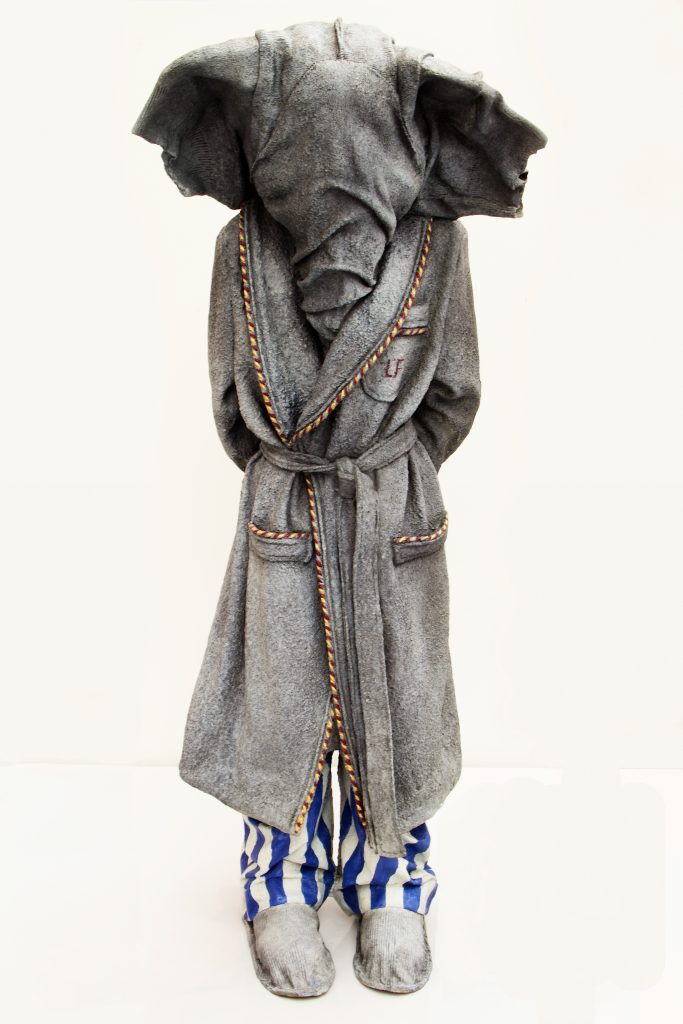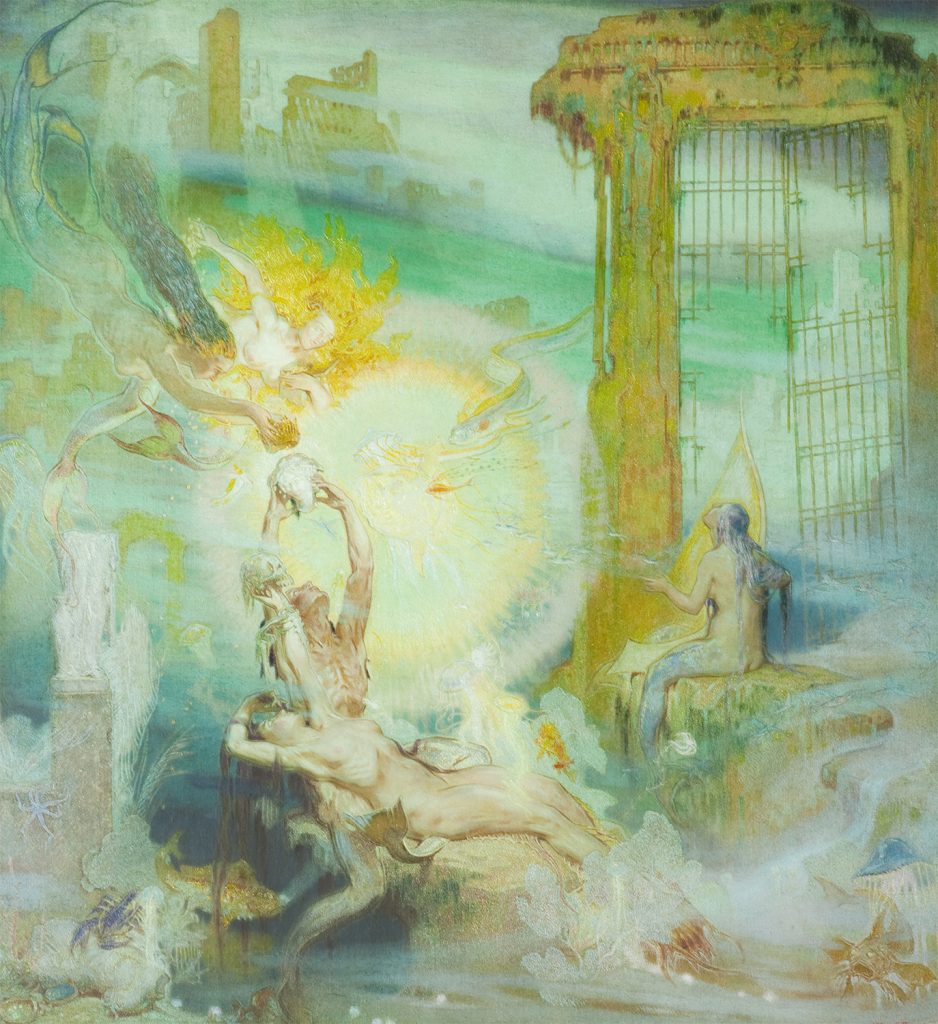We recently had two Work Experience Students with us at The Atkinson who were tasked with reviewing items currently on display in our The Story So Far exhibition. Here are their words.
Looking at the theme of storytelling, The Story So Far includes highlights from The Atkinson’s collection and the Harris Art Gallery in Preston.
The exhibition looks at differing kinds of story-telling, from the illustration of literary and historical texts to coastal and rural genre as well as classical and domestic scenes. The exhibition also includes post-war and contemporary works of art, illustrating the galleries’ strategies for developing the narrative theme.
Thank you Aimee & Eva for your excellent analysis!

The City of the Golden Gates, 1919-22, by William Shackleton (1872 – 1933) (Oil on canvas). Harris Museum & Art Gallery & Library.
The City of the Golden Gates by William Shackleton (1919)
As English literature students who have an interest in Greek Mythology, we find this piece to be very beautiful and eye catching due to the juxtaposition between the incredibly lifelike details, and the supernatural elements it depicts. Atlantis, the subject of the painting, is a fictional island mentioned in Plato’s works ‘Timaeus and Critias’ and is an allegory for the hubris of nations. Atlantis is portrayed as an empire that ruled all of the Western world.
The sunfish illuminating the centre of the painting draws your eyes in, expanding to the ethereal figures who are holding what appears to be the remains of sailors lost to the sea in a rather macabre display of crowning the broken figurehead (which was seen as a bringer of good luck to its ship) of his sunken ship. This could be a mocking reminder of his failures as he watches the broken figurehead be revered for its failures whilst his remains lay on the ocean floor, lacking any sense of the pride and power that Atlantis was known for. The figurehead’s obvious femininity would also spite the sailors due to traditional gender roles and the association of power with men, so the sight of a female hero and leader would not have been a welcome one after suffering the loss of their nation.
Mermaids are typically associated with beauty and tragedy, as their mythological origins often show their siren counterparts as luring sailors to their deaths on the rocky shores. Their physical beauty and captivating voices were the perfect combination at leading men to their demise, as referenced in ‘The Odyssey’ and ‘Jason and the Argonauts’. The mermaids depicted in the painting are also shown to be extremely beautiful, and just as ruthless as they play with the remains of dead soldiers.
The abundance of blues and golds give the painting a very regal tone, tying into the crowning scene in the centre, which is both consistent with its underwater setting and also very mystical, giving it an eerie feel as the blue expands into the background.
Bedtime Boy by Laura Ford (2017)

The Bedtime Boy by Laura Ford is supposed to invoke enchanting memories of childhood as this sculpture is influenced by characters such as ‘Babar the Elephant’ and other children’s cartoons. The sculpture is supposed to emanate a sense of childhood innocence from his nervous and shy demeanour, with his attire further adds to this sense as he’s ready for ‘bedtime’ in his pyjamas.
Marcello Spinelli wrote that “Ford’s creatures are faithful representations of fantasy and, at times, a nightmarish imagination.”, which we wholeheartedly agree with. ‘Bedtime Boy’ may initially seem completely innocent, upon seeing this figure he invoked a deep unsettlement and feeling of unease. The sculpture seems similar to the child characters often seen in horror and the gothic media, where that sense of innocence has been warped to contrast with the revelation of their darker side. The idea of twisting something so pure and innocent into a feeling of evil and dread feels deeply wrong, and this reflection of a sinister force through innocence is present in the ‘Bedtime Boy’. This instinctive unsettlement is likely a consequence of the hybrid nature of the sculpture, part-boy and part-elephant, which is often credited as being the ‘uncanny valley’ effect, which suggests that human-like objects that don’t completely resemble actual humans provoke familiar feelings of coldness, eeriness and revulsion in the viewer. This is often seen in the Gothic genre through ‘the doppelganger’, a literal or symbolic double/twin set in opposition to one of the characters of the story, and is seen in novels such as ‘Frankenstein’ and ‘The Strange Case of Dr Jekyll and Mr Hyde’. This feeling of similarity to humanity, but in a warped sense, is extremely present in the ‘Bedtime Boy’.
Overall, we feel like the ‘Bedtime Boy’ is a juxtaposition of both the innocence of childhood with something much more sinister, which leads to a feeling of foreboding when looking at the ‘Bedtime Boy’.
Posted on 4 July 2023 under Exhibition, General news







